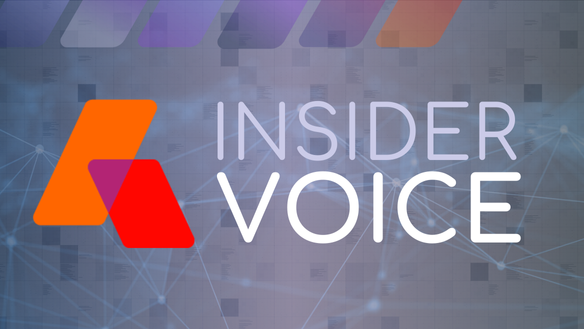Streaming Media Trends: Dynamic Content Optimization
This is the first in a series of articles exploring some of the current trends impacting streaming media companies. Today, we’re looking at the impact of Dynamic Content Optimization on streaming advertising.
Streaming media companies are increasingly using dynamic content optimization (DCO, also referred to as “dynamic creative optimization”) to deliver personalized and relevant ads to their audiences, based on real-time data and feedback. DCO is a technology that creates multiple variations of an ad using different media and components, and then selects (or assembles in real time!) the best one for each viewer. DCO can improve the performance and efficiency of streaming media ads, as well as the customer satisfaction and retention.
In this blog post, we cover the following topics:
- What are the benefits of DCO for streaming media ads?
- How does DCO work for streaming media ads?
- What are some examples and case studies of streaming media companies that use DCO for their ads?
- How does a modern advertising order management system help media companies implement DCO?
Let’s dive in!
What are the benefits of DCO for streaming media ads?

Streaming media offers a huge opportunity for advertisers, as it can reach a large and diverse audience that consumes content across different platforms and devices. According to Nielsen, U.S. streaming usage hit a new high in April 2023, capturing more than 30% of audiences’ total TV time. Streaming media can provide rich data and feedback from the users, which can help advertisers optimize their campaigns and measure their results.
Some of the benefits of implementing DCO for streaming media companies are:
- Personalization: DCO can adapt the quality and format of the video to the network conditions and device capabilities of the user. It can also personalize the video content to the user’s interests, preferences, and behavior. This can enhance the quality and engagement of the ads, and make them more appealing to the viewers. 73% of people think ad experiences are more enjoyable when they feel personalized and relevant, according to research by Amazon Ads and Omnicom Media Group.
- Automation: DCO can automate the creation and distribution of different variations of an ad based on the user’s data. This can reduce the cost and complexity of the ad delivery, and save time and resources for the publishers.
- Real-time response: DCO can optimize the ad delivery for different scenarios, such as live streaming or video on demand. It can also adjust the ads based on the user’s feedback and actions, such as clicks, views, or conversions. This can improve the relevance and effectiveness of the ads, and increase the return on investment (ROI) for the advertisers.
- Improved performance and ROI: DCO can track and measure the performance of different creative variations and optimize the campaigns accordingly. It can also provide analytics tools that can help advertisers compare their ad spending and results with their competitors. This can improve the performance and ROI of streaming media ads, and increase the customer satisfaction and retention.
By using DCO, streaming media companies can enhance the quality and engagement of their ads, reduce the cost and complexity of their delivery, and increase their customer satisfaction and retention. Ultimately, DCO can improve the performance and efficiency of streaming media ads by delivering the right message at the right time to the right user.
How does DCO work for streaming media ads?
DCO uses artificial intelligence and machine learning to analyze the data and feedback from the users, and then adjust the content delivery accordingly. DCO takes multiple media (images, videos) and multiple ad components (such as images, videos, text, and calls-to-action) and then mixes and matches them in new ways to improve the ad performance. This process automatically builds creative variations for each person who views the brand’s ad.
Publishers should be aware of some challenges and risks that they may face when they implement DCO for their ads. Here are some of them:
- Data quality and privacy: DCO relies on data from various sources, such as user profiles, behavior, location, device, context, etc., to create personalized and relevant ads. Publishers need to ensure that the data they use is accurate, reliable, and up-to-date. They also need to comply with the data privacy regulations and policies of different regions and platforms, and respect the user’s consent and preferences.
- Creative quality and consistency: DCO uses multiple media and components to create different variations of an ad based on the user’s data. Publishers need to ensure that the creative quality and consistency of their ads are maintained across different formats, devices, and scenarios. They also need to avoid over-personalization or repetition that may annoy or alienate the user.
- Performance measurement and attribution: DCO can improve the performance and efficiency of streaming media ads by delivering the right message at the right time to the right user. However, publishers also need to measure and attribute the impact of their DCO campaigns on their business goals and KPIs. They need to use analytics tools that can track and report the performance of different creative variations and optimize their campaigns accordingly.
To implement DCO for streaming media ads, advertisers need to follow some best practices and use modern tools that can help them create and manage their campaigns. Those tools include a modern advertising order management system (OMS) such as Operative’s AOS.
What are some examples of streaming media companies that use DCO for their ads?
There are many examples of streaming media companies starting to use use DCO for their ads and achieve great results. Here are two of them:
- Hulu: Hulu is a popular streaming media platform in the U.S., with over 40 million subscribers. Hulu uses DCO to create dynamic video ads that match the user’s mood, genre, and show preferences. Hulu also uses DCO to optimize its ad frequency and duration based on the user’s engagement and feedback. According to a study by Magna Global, Hulu’s dynamic video ads increased brand awareness by 40%, purchase intent by 30%, and ad recall by 50%.
- Spotify: Spotify is the world’s largest music streaming service, with over 350 million users. Spotify uses DCO to create personalized audio ads that target the user’s music taste, mood, and listening behavior. Spotify also uses DCO to optimize its audio quality based on the user’s network and device. According to a study by Nielsen, Spotify’s personalized audio ads increased brand awareness by 24%, ad recall by 25%, and purchase intent by 14%.
DCO is a powerful tool that can help streaming media companies create more relevant, informative, and impactful ads for their audiences. To implement DCO for streaming media ads, advertisers need to follow some best practices and use modern tools that can help them create and manage their campaigns. Those tools include a modern advertising order management system (OMS).
A modern order management system can help publishers implement DCO for streaming media ads by:
- Providing a centralized platform to manage all types of ad inventory, including digital, linear, and streaming media.
- Integrating with various data sources, such as user profiles, behavior, location, device, context, etc., to inform the creative decisions for DCO.
- Tracking and measuring the performance of different creative variations and optimizing the campaigns accordingly.
- Generating accurate and error-free invoices based on the actual delivery and performance of the ads.
One example of a modern OMS that supports DCO for streaming media ads is our very own AOS. AOS is a cloud-based revenue automation platform that connects and automates digital and linear revenue workflows. AOS can help publishers create, manage, and optimize DCO campaigns for streaming media ads across platforms and inventory types.
Contact us or talk to your Operative rep to learn more about how we support streaming media companies around the world.



